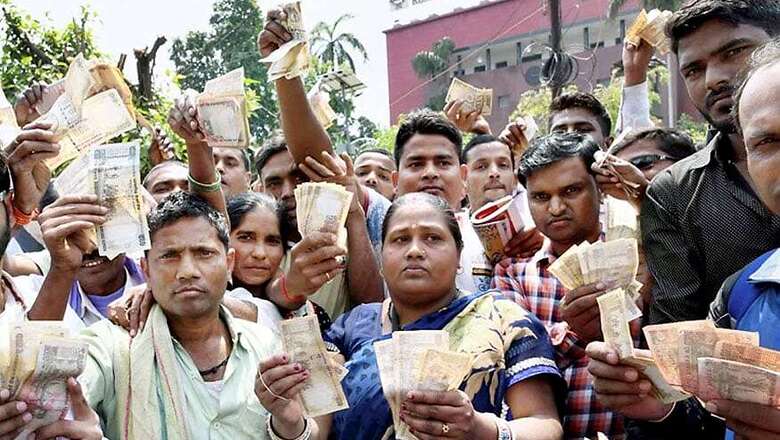
views
New Delhi: Financial savings of the household sector in form of cash soared to 7-year high of 2.8 per cent of gross national disposable income (GNDI) in 2017-18, the year following demonetisation, showed RBI data.
Following cash crunch in the aftermath of the November 2016 demonetisation, household savings in form of "currency" had declined by 2 per cent during 2016-17.
Household financial saving the most important source of funds for investment in the economy too declined to 6.7 per cent of GNDI in 2016-17, down from 8.1 per cent in 2015-16 (Table II.1.1).However, it rose to 7.1 per cent in 2017-18.
As per the RBI data, financial saving of the household sector in form of currency was 1.2 per cent of GNDI in 2011-12, 1.1 per cent in 2012-13, 0.9 per cent in 2013-14. It increased to 1 per cent of GNDI in 2014-15, 1.4 per cent in 2015-16 and declined by 2 per cent in the demonetisation year of 2016-17.
The savings in form of deposits had soared to 6.3 per cent of GNDI in the demonetisation year and slipped to 2.9 per cent in following year (2017-18).
As per the chart, savings in form of deposits have been declining since 2012-13 (except in 2016-17 when people deposited their scrapped Rs 500/1,000 in banks) mainly due to fall in bank interest rates.
On the other hand, data showed that, savings in form of shares and debentures increased to 0.9 per cent of GNDI in 2017-18 from 0.3 per cent in 2015-16. This could be attributed to the boom in the stock market.The demonetisation had sucked out about 86 per cent of the currency from circulation. As per the RBI report, almost all of the scrapped notes were returned by people to banks.



















Comments
0 comment